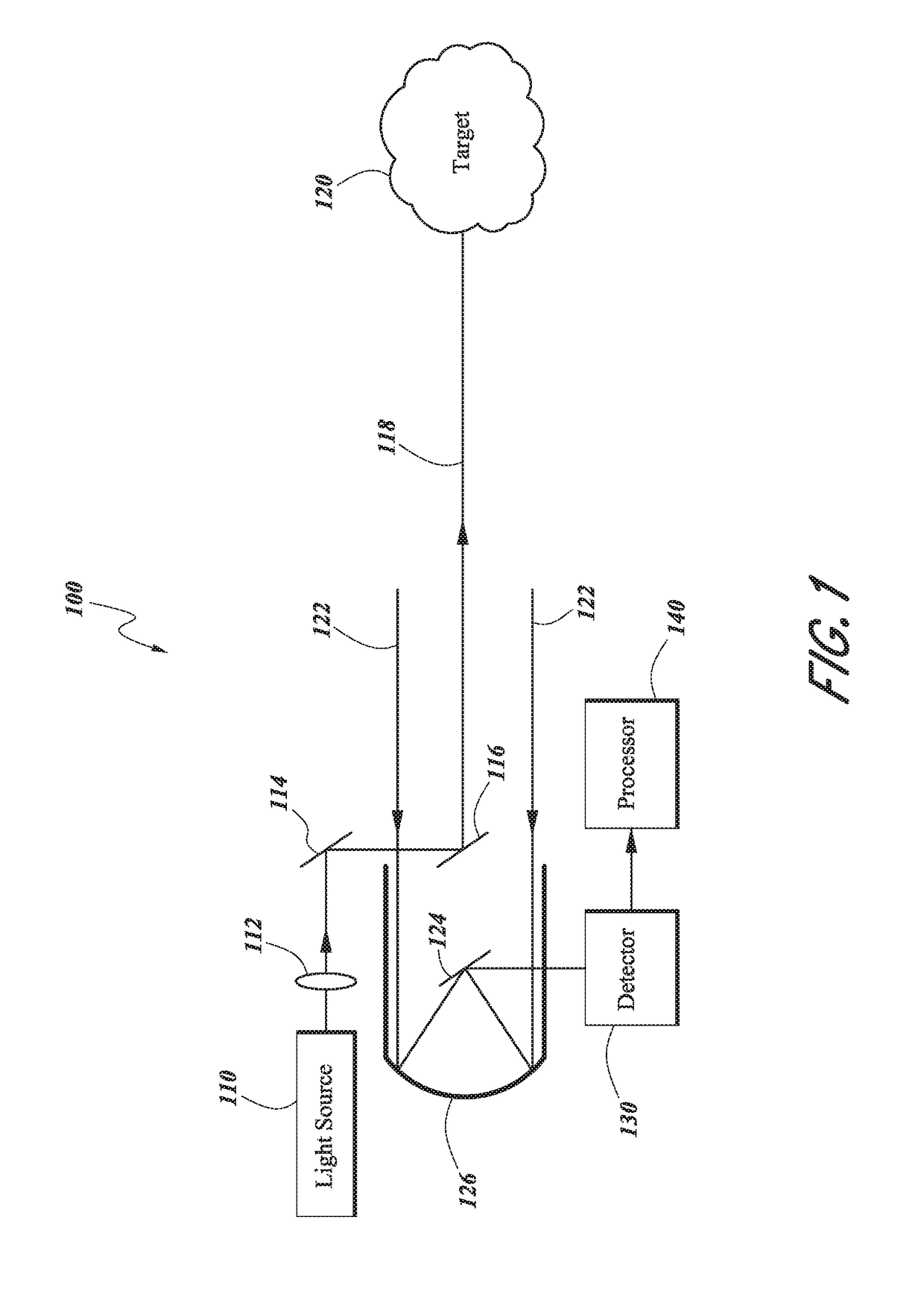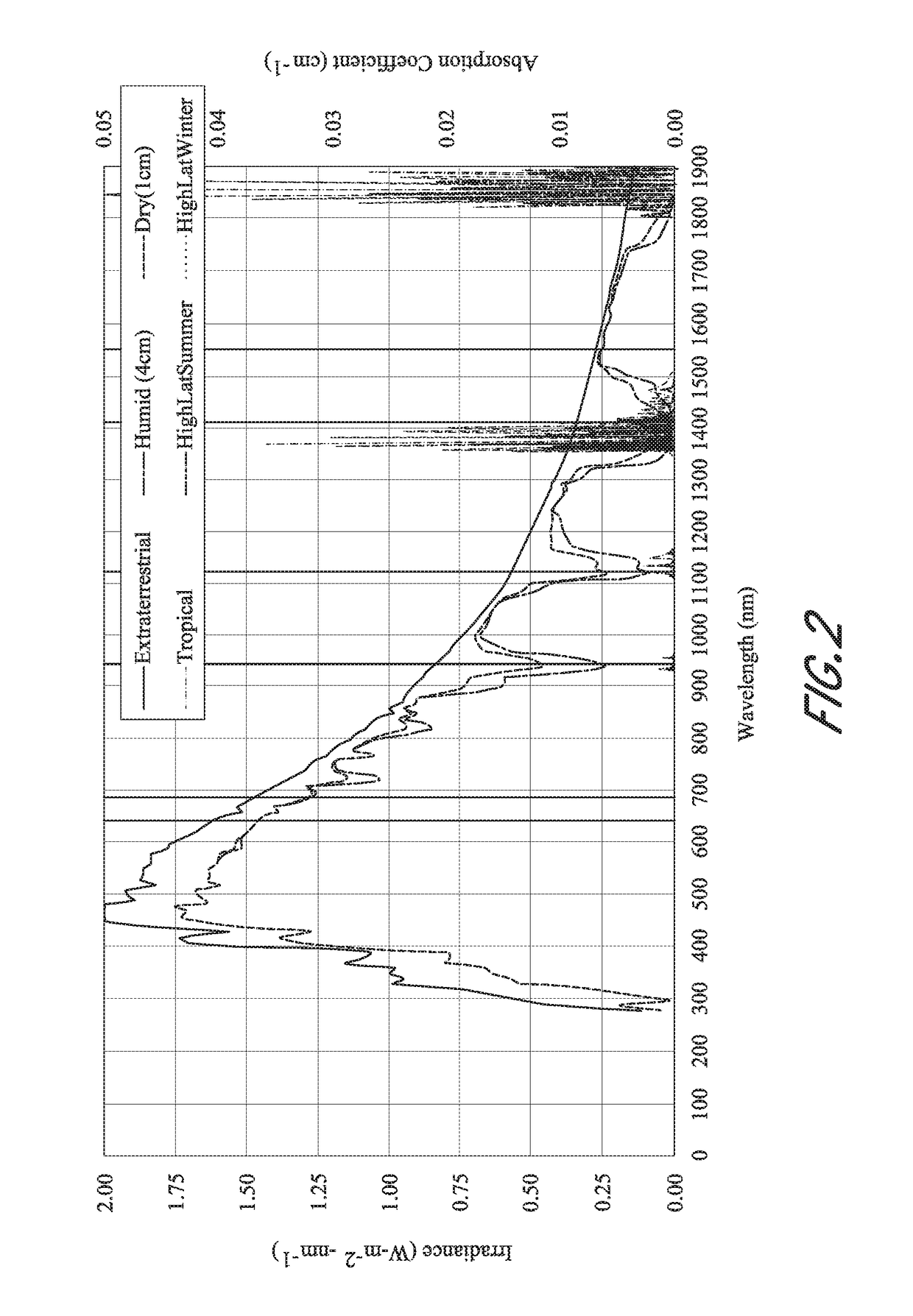Lidar system with improved signal-to-noise ratio in the presence of solar background noise
- Summary
- Abstract
- Description
- Claims
- Application Information
AI Technical Summary
Benefits of technology
Problems solved by technology
Method used
Image
Examples
Embodiment Construction
[0020]FIG. 1 is a schematic illustration of an example lidar system 100. The lidar system 100 includes a light source 110. The light source 110 can be, for example, a laser which emits light having a particular operating wavelength. The light source 110 emits an output beam of light 118 which is directed downrange toward a remote target 120. The output beam of light 118 can be continuous-wave, pulsed, or modulated in any way desired for a given application.
[0021]The lidar system 100 can optionally include one or more optical components to condition the output beam 118. These can include, for example, a beam expander lens 112 to expand the output beam 118 to a desired diameter. The lidar system 100 can also include one or more mirrors to direct the output beam 118 along a desired path. For example, a first mirror 114 directs the output beam 118 towards a second mirror 116. In some embodiments, the first and / or second mirrors 114, 116 are scanning mirrors which can steer the output be...
PUM
 Login to View More
Login to View More Abstract
Description
Claims
Application Information
 Login to View More
Login to View More - R&D
- Intellectual Property
- Life Sciences
- Materials
- Tech Scout
- Unparalleled Data Quality
- Higher Quality Content
- 60% Fewer Hallucinations
Browse by: Latest US Patents, China's latest patents, Technical Efficacy Thesaurus, Application Domain, Technology Topic, Popular Technical Reports.
© 2025 PatSnap. All rights reserved.Legal|Privacy policy|Modern Slavery Act Transparency Statement|Sitemap|About US| Contact US: help@patsnap.com



